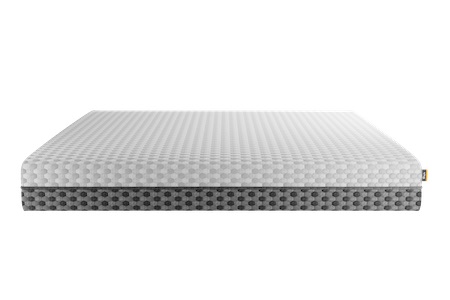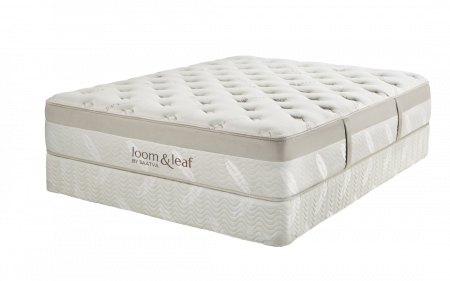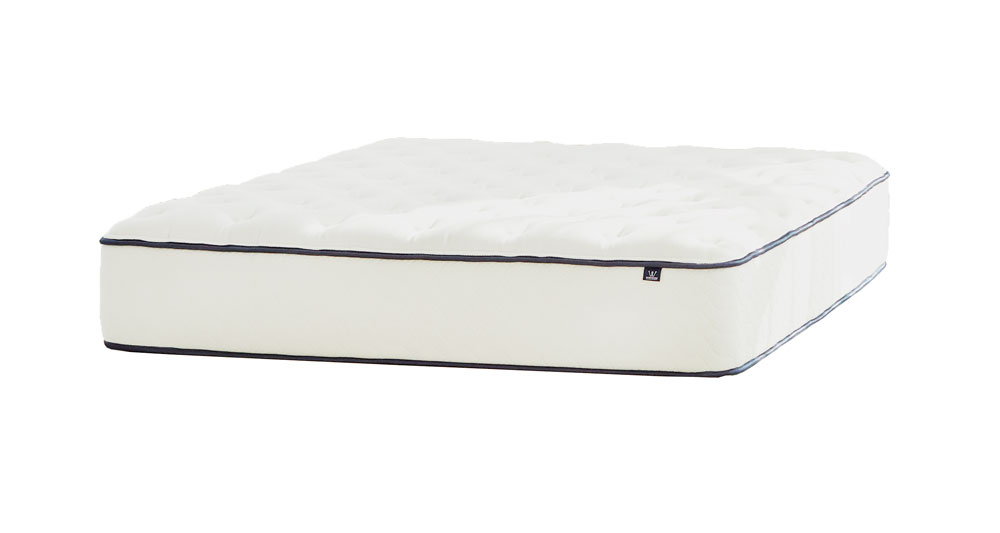Choosing the Best Memory Foam Mattress
There are a lot of quality memory foam mattresses on the market today. To find the foam mattress that’s uniquely right for you, you’ll have a few questions to answer. What firmness setting do you prefer? How enveloped do you want to feel by your mattress? Do you tend to sleep hot or cool?
To answer these questions, you need to know the density and ILD ratings of the foams used in your mattress. Let’s start by understanding what these terms mean.
Density and ILD
Two important considerations regarding memory foam mattresses are density and indentation load-deflection (ILD).
Density is measured in pounds per cubic foot, and is used to indicate how well the mattress will support your body weight. Most memory foam comfort layers range in density from 2.5 pounds per cubic foot to 8 pounds per cubic foot (abbreviated as PCF). A common industry benchmark for a high-quality memory foam mattress is a density of 4-5 pounds per cubic foot.
Density is used to categorize memory foam into three grades: low, medium and high. The table below features a detailed breakdown of memory foam density.
You may have noticed a trend in the table above. The higher the density, the slower the foam recovers its original shape. Thanks to this quality, higher-density foams excel at providing support and conform to the body very closely. However, this also means they have a higher tendency to trap heat, which can be an issue for hot sleepers.
Lower-density foams, on the other hand, recover their shape quickly and are less likely to retain heat. Because they’re so responsive, however, lower-density foams don’t isolate motion as well as higher-density foams. They are also less durable than high-density foams and provide less support.
Generally, memory foam mattresses contain a mix of both foams, as they each have their pros and cons.
How do you use this knowledge to your advantage? Think about what’s most important to you as a mattress shopper. If staying cool is of paramount importance, you may prefer a mattress with medium- or low-density foams. If you are most concerned with support and durability, you’ll want to look for a mattress with a higher ratio of high-density foams. A mattress made of more high-density foams also tends to isolate motion better, so couples may prefer these mattresses.
Selecting Your Firmness Level
While density measures the supportiveness of memory foam, ILD is used to gauge the firmness of a mattress. ILD (indentation load-deflection) indicates how much pressure is required to make a four-inch indentation on the top surface of a mattress. The higher the ILD number, the firmer the mattress. Some mattresses carry an ILD range, rather than a single number, because the firmness may be influenced by other factors, such as room temperature.
Most memory foam mattresses on the market have a comfort layer with an ILD number that falls between 8 and 20; as a general rule, you’ll want to look for memory foam mattresses with an ILD of at least 10 to ensure adequate support. The table below explores ILD numbers in-depth.
In addition to the ILD range for the bed, a mattress manufacturer may share the ILD ratings for the individual memory foam comfort layers. Exceptionally soft memory foam will conform to your body more easily, but may also create a ‘sinking’ feeling that some sleepers find uncomfortable. On the other hand, ultra-firm memory foam provides a more stable sleep surface but is not as effective at alleviating pressure points.
Finally, a mattress will have a firmness rating that’s separate from these ILD ratings. Firmness descriptions vary from Soft to Very Firm, and typically correlate with a 1-to-10 scale. When selecting your mattress firmness level, your goal is to find whichever firmness setting supports good spinal alignment while you sleep. To do this, you’ll want to keep your body weight and sleep position in mind.
- Lightweight sleepers require a softer mattress than heavier sleepers, in order to enjoy sufficient contouring and pressure point relief.
- Heavier sleepers, on the other hand, require a firmer mattress to prevent their body from sinking too deeply into the mattress.
- Average weight sleepers, unsurprisingly, typically sleep best on a middle-of-the-road mattress firmness rating.
Your sleep position is the next thing to consider after body weight. Side sleepers often find softer mattresses to be more comfortable, as these allow their pressure points (like the hips and shoulders) to sink deeper into the mattress surface and keep their spine aligned. Stomach sleepers need a firmer mattress, in order to avoid the pelvis from sinking out of alignment with the rest of the spine. Back sleepers also tend to be more comfortable on firmer mattresses.
Types of Memory Foam Mattresses
The name “memory foam mattress” is a bit of a misnomer. Because memory foam is so soft, mattresses are never made entirely from memory foam. If they were, the mattress wouldn’t be able to provide support! Typically, memory foam mattresses are constructed with at least one layer of memory foam in the comfort system; the support core is almost always made of high-density polyfoam.
Today’s memory foam models feature several varieties of memory foam. Some of the most popular materials include:
- Traditional (or viscoelastic) memory foam is the most widely available variety of the material. It is polyurethane-based, and categorized as a type of polyfoam. This material softens when it comes into contact with body heat, and then retains its original shape once it cools.
- Plant-based memory foam is manufactured using a combination of petrochemicals and botanical ingredients. Plant-based foam layers are designed in an open-cell configuration, making them more breathable and cooler for sleeping than standard memory foams.
- Gel-infused memory foam is a relatively new material, and is not as widely available as other memory foam types. The addition of cooling gel helps reduce heat and keep you sleeping comfortably. The shape retention of gel-infused memory foam is comparable to traditional memory foam. Of our top picks, Nectar Mattress, Loom & Leaf, and the Plank Mattress all feature comfort layers of gel-infused memory foam.
- Copper-infused memory foam, another relatively new version of the material, features beads lined with thin copper wire placed throughout the foam. Like gel, the copper components will help you sleep cooler throughout the night. This material is also designed to help sleepers with joint pain and stiffness, since copper is known to aid with blood circulation.
Other Considerations for Sleepers Interested in a Memory Foam Mattress
In addition to the density, ILD number and mattress construction, there are several other factors to consider when shopping for the right memory foam mattress.





